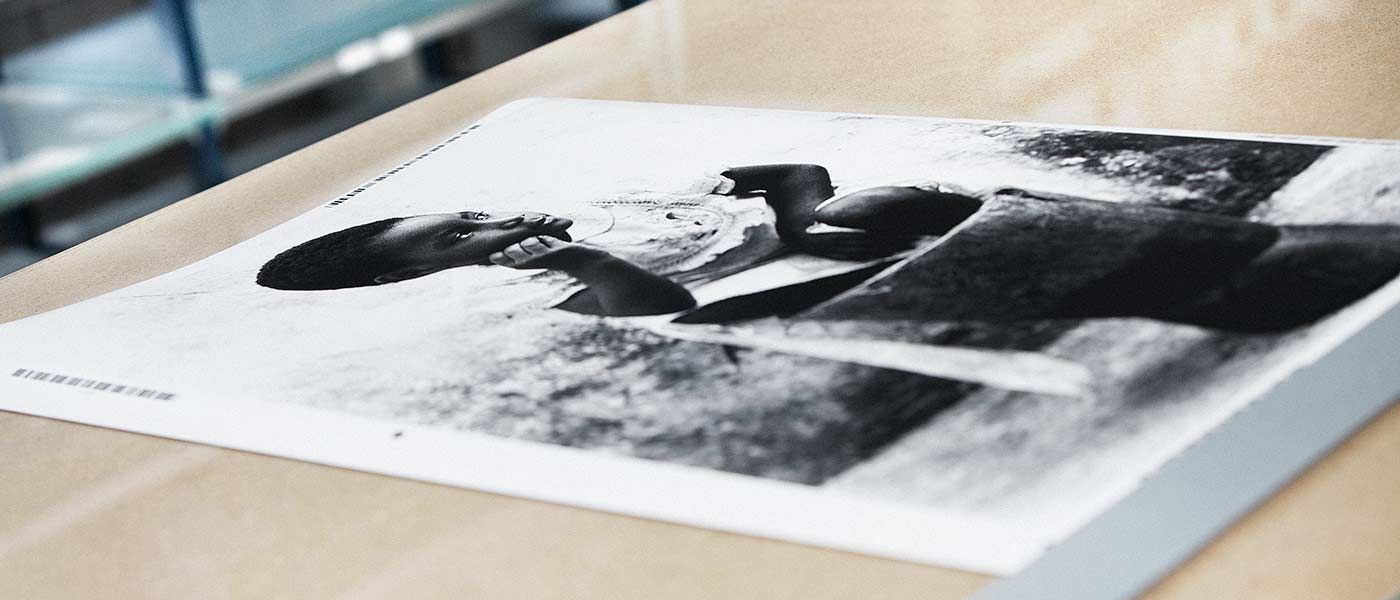The Difference Between an Inkjet Print and C-Print: A Comparison
In this blog, we will explore the difference between an inkjet print and a c-print. Both printing methods have unique features and applications, and it's important to understand what sets them apart. We'll discuss the technologies behind both prints, the pros and cons, application areas and answer some frequently asked questions.

What is an Inkjet Print?
An ink jet printer uses tiny ink droplets that are sprayed onto paper to form images. The process begins with a print head that contains several microscopic nozzles. These nozzles spray ink onto the paper in different patterns, creating the desired image. Inkjet prints (link to fine art printing) are popular because of their versatility and color accuracy.
What is a C-Print?
C-printing is a printing method based on a chemical process to print color photographs. The word "C-print" stands for chromogenic print. In this technique, light is projected onto photo paper, with chemicals reacting to the light to form colors. C-prints are known for their high quality, vibrant colors and durability. Another name for C-prints is Lambdaprints.
The difference between an Inkjet Print and C-Print
Now that we have a basic understanding of both printing methods, let's look at the main differences between an inkjet print and a c-print:
Technology
The main difference between an inkjet print and a c-print is the technology used. In an inkjet print, ink droplets are sprayed onto the paper, while a c-print is based on a chemical process with photographic paper. These different technologies affect the operation, results, and applications of both prints.
Results and Quality
Inkjet prints are known for their color accuracy and detailed reproduction. The tiny ink droplets provide sharp lines and high resolution. On the other hand, a c-print offers excellent image quality, vibrant colors, and a glossy finish. C-prints are especially popular in the photography and art world because of their professional appearance.
Applications
Inkjet prints are versatile and suitable for a wide range of applications. They can be used to print photographs, posters, flyers, banners and even textiles. The flexibility of inkjet printers allows them to print on a variety of materials, including paper, canvas, and vinyl.
C-prints find their application primarily in the world of photography and art. They are often used for printing artwork, portfolios, exhibition prints and other high-end applications where color accuracy and durability are essential.
Advantages of Inkjet Prints
Color accuracy: Inkjet printers deliver accurate color reproduction, enabling detailed prints.
Flexibility: Inkjet printers can print on a variety of materials, including paper, canvas, and textiles.
Wide range of applications: Inkjet prints are suitable for printing photographs, posters, flyers, banners, and various fine art papers.
Disadvantages of Inkjet Prints
Cost: Inkjet printers and their cartridges can be expensive. Durability: Inkjet prints can be susceptible to fading and damage from moisture.
Applications of C-Prints
Photography: C-prints are often used for high-quality photography prints. Art prints: Artists and galleries use c-prints for printing artwork with vibrant colors and a professional look.
Frequently Asked Questions (FAQ)
Which printer is right for my needs?
When choosing a printer, consider your specific needs. If you primarily want to print photographs and artwork, an inkjet printer or a c-printer is appropriate. For general office use, an inkjet printer is a good choice.
How long does a c-print last?
The durability of a c-print depends on several factors, including the quality of the paper and proper handling of the print. In general, c-prints can last for decades if properly stored and protected from direct sunlight and moisture.
By plexifying prints, they can last for years.
Conclusion
The difference between an inkjet print and a c-print is in the technology used, the result, the quality and the areas of application. Inkjet prints are versatile and offer color accuracy, while c-prints are ideal for high-quality photography and art prints. When choosing the right printing method, it is important to consider your specific needs and the desired quality of the prints.
At CRE8, we are ready to help you make the right choice for your printing needs. Feel free to contact us for more information or advice.